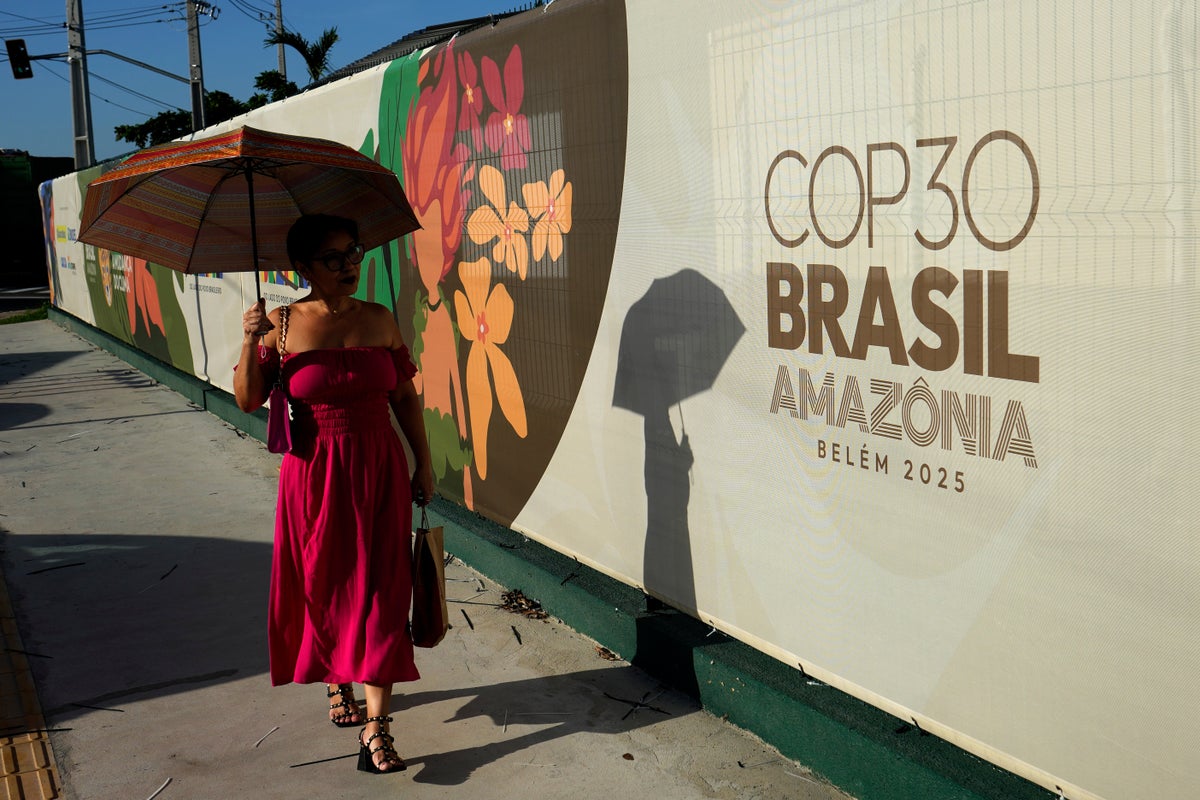
As thousands of foreign delegates descend on the city of Belem in the Brazilian Amazon for Cop30 this week, questions are being asked about the usefulness of the UN climate conference. It is 10 years since the Paris Agreement was adopted at Cop21, a landmark moment that was meant to establish a set of global rules to cut emissions and tackle the climate crisis once and for all.
The decade since that summit in 2015 has seen mixed progress. Expected global warming by 2100 has fallen by nearly one degree, from 3.6C pre-Paris to 2.7C under current policies, though even this level of global warming would have a catastrophic impact, scientists have warned.
Emissions across the world also continue to rise year on year. But delve into the climate data, and there are some grounds for optimism.
For starters, the rate at which emissions are rising has slowed considerably in the years since the Paris Agreement was signed, even if the achievement of “peak emissions” remains elusive for now.
Great swathes of the planet have, however, hit their peak, including every member of the G7, the EU, Australia, and some countries in Latin America.
In all, data analysed by The Independent shows that in the years since the Paris Agreement, 80 countries saw their emissions decrease, while 133 countries saw them increase.
Crucially, even in emerging economies like India and China, it is no longer the case that GDP growth is tied to emissions.
This means that, even as these countries continue to boom economically, it does not mean that their emissions have similarly to increase. This effectively counters the argument that developing countries should be allowed to emit in order to develop.
A key milestone was also marked this year, with the news that China’s emissions are now believed to have peaked.
One big reason why the world is beginning to get a handle on emissions is the soaring growth in the capacity to generate renewable energy.
This has been driven by the fact that solar and wind technology, which does not depend on expensive fuel to work, now provides the cheapest form of electricity there has ever been in many parts of the world.
New analysis published this week by the think tank Ember found that renewable sources provided 32 per cent of global electricity in 2024. This is set to increase to 43 per cent by 2030, meaning that a key global target agreed at Cop28 in Dubai – to triple renewable electricity – is now within sight.
It is not just in relation to renewable energy sources that the cost of technology has plummeted. Electric vehicles have also boomed over the past decade, from less than a million cars sold in 2015 to more than 15 million sold last year, driven by the Chinese market.
In Europe, electric and hybrid vehicles now represent a big share of the car market. In the UK, for example, a fifth of cars sold are now pure-electric, while last year in Norway, the number of electric vehicles outnumbered the number of petrol vehicles on the road for the first time.
On the policy front, the idea that a country could reach “net zero” emissions was not yet considered feasible back in 2015. It was only in 2019 that the UK became the first major economy to legally commit to a net-zero emissions target by 2050 – making it a serious possibility for the first time that rich, industrialised countries would one day eliminate their climate impact.
Now, more than 140 countries have pledged to reach net zero, with 37 of them holding the target in law, according to the think tank ECIU.
Donald Trump’s revocation of America’s commitment to that target is certainly a setback for global climate ambition. But even without the US on board, some 74 per cent of global emissions, and 79 per cent of the global population, are now covered by net zero targets.
However, even if the vision for long-term emissions reductions is in place, the latest data suggests that short-term policy designed to help achieve those pledges remains lacking for the time being.
Ahead of Cop30, countries were supposed to submit new interim emissions pledges for 2035, known as nationally determined contributions (NDCs), but only around 60 managed to do so in time.
The latest “Emissions Gap” report from the United Nations Environment Programme found that, based on those NDCs, global emissions are set to fall by around 15 per cent compared with 2019 levels by 2035, while the reduction needed by 2035 to align with the 2°C pathway is 35 per cent, and for the 1.5C pathway, 55 per cent.
“The path to a liveable future gets steeper by the day,” said UN secretary general Antonio Guterres in his message in the report. “But this is no reason to surrender. It’s a reason to step up and speed up.
“Now is the time for countries to go all in and invest in their future with ambitious climate action – action that delivers faster economic growth, better human health, more jobs, energy security and resilience.”
This article is part of The Independent’s Rethinking Global Aid series







